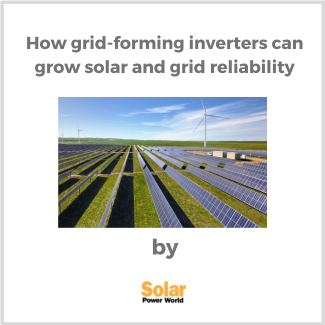Inverters with grid-forming controls can provide support functions on power grids with very large amounts of renewable, inverter-based resources like solar, wind and batteries. They can sense and respond to changes on the grid in real time, something that enables a network of solar energy systems to designate a subset of its inverters to operate in grid-forming mode while the rest follow their lead. That means more stable grid voltages and frequencies during disturbances and disruptions.
How grid-forming inverters can help grow solar and grid reliability

